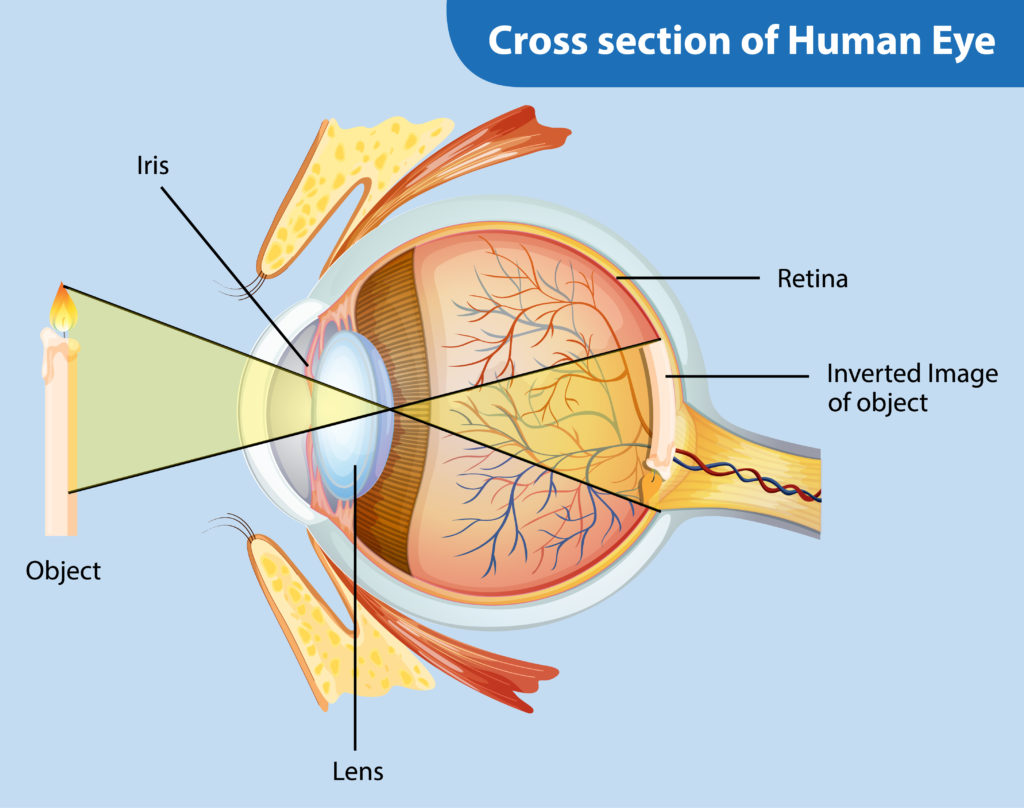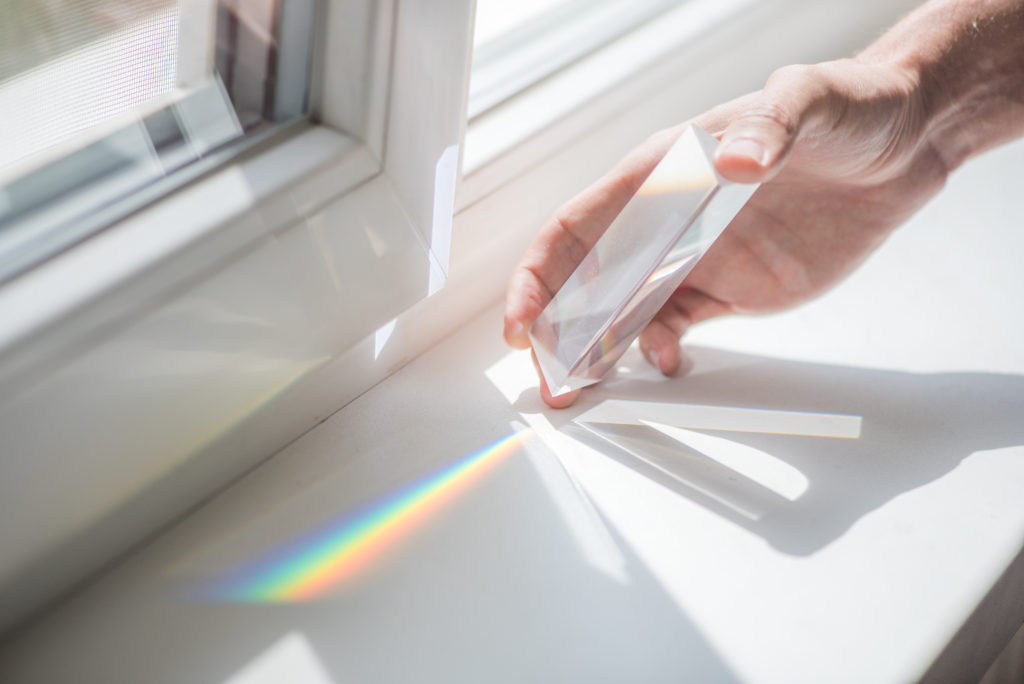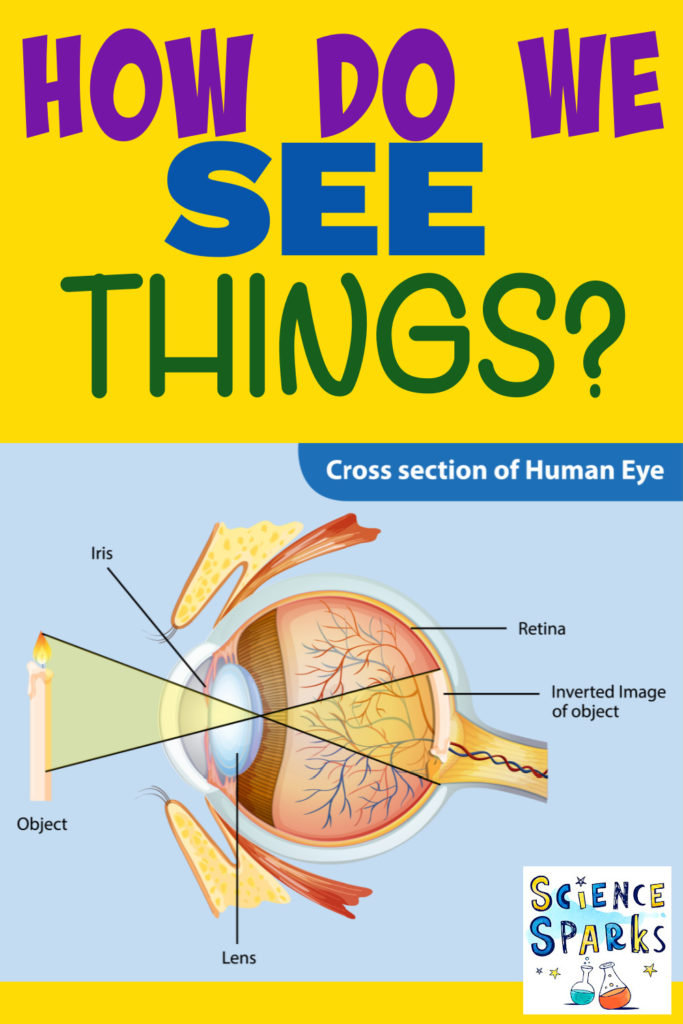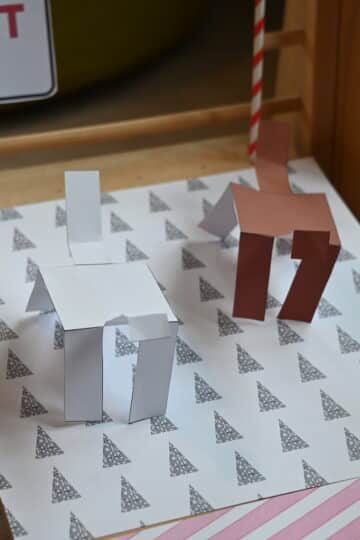How do we see things? We see things because of light!
The simple explanation
Light bounces off objects and enters our eyes allowing us to see them.
It's harder to see at night as there's less light to bounce off objects.
Let's make it a bit more complex
Light enters the eye through the cornea ( the bit on the front of the eye ). The pupil controls the amount of light entering the eye. If you look in the mirror on a sunny day you'll notice your pupil is small, but it becomes bigger when there's less light allowing more to enter the eye.
As the eye is curved it bends the light entering it and so an upside down image is created on the retina which the brain very cleverly turns the right way up.
Muscles around the lens allow it to slightly shape allowing the eye to focus light on the retina.

What are sources of light?
The sun, light bulbs and fire are sources of light.
Facts about light
Light travels in straight lines.
Light can pass through transparent ( see through ) materials but not opaque materials.
Shadows form because light cannot pass through the object casting the shadow.
Light takes about 8 minutes and 20 seconds to travel from the Sun to the Earth.
Light can be natural or human made.
We can see the moon because it reflects light from the sun!
Visible light is made up of lots of all the colours of the rainbow. A prism can be used to split white light into its constituent colours.

Did you know there are different types of light? Gamma rays, microwaves and the rest of the electromagnetic spectrum are all types of light.
Rainbows form because water droplets split light into the colours of the rainbow.
Thomas Edison invented the lightbulb.

Last Updated on July 18, 2022 by Emma Vanstone




Leave a Reply